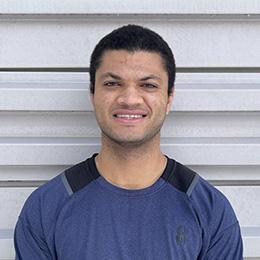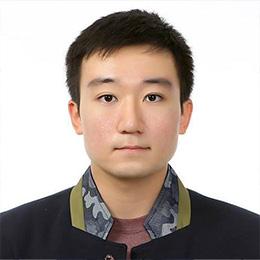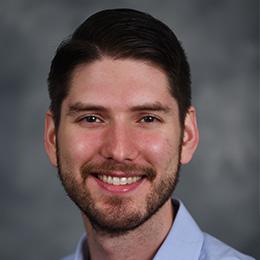2022 Commercialization Fellows
Meet the 2022 Commercialization Fellows and learn about the potential real-world impacts of their technological innovations. Read the Around Cornell announcement for additional information on the cohort.

Ronald Heisser
Mechanical and Aerospace Engineering, Ph.D. Candidate
Micro-Combustion-Powered Tactile Display Arrays
Heisser has developed a soft actuation system, wherein a gaseous methane-oxygen mixture flows through a molded network of fuel micro-channels to supply individual, small-scale, combustion chambers with stored chemical energy. Computer-controlled sparks ignite the gas mixture and cause a silicone membrane covering the chamber to displace outward, serving as a haptic touch stimulation point.
This technology can be applied to develop a computer-controlled refreshable braille display, creating a mass-produced, portable braille device — essentially a “braille kindle” — that visually-impaired individuals can use to interface with computers.

Sean Kim
Mechanical and Aerospace Engineering, Ph.D. Candidate
Tissue-Engineered Intervertebral Disc with Biodegradable Cage
Intervertebral disc (IVD) degeneration is one of the leading causes of disability, often leading to lower back pain and imposing a significant medical and financial burden on both patients and society. Currently, the surgical options available can lead to complications and further surgeries.
Kim has used tissue engineering (TE) to develop an IVD construct that can restore and regenerate the function of the native tissue, as well as a 3D-printed biodegradable cage. The cage provides the extra mechanical support needed initially, protecting the soft TE IVD constructs until total integration with the host tissue is achieved. This technology will both reduce the risk of revision surgery for patients ,and simplify the time and expense of the procedure for surgeons.

Zachary Manzer
Chemical and Biomolecular Engineering, Ph.D. Candidate
Cell-free Bioelectronic Membrane Protein Sensors
Manzer’s technology combines cell-free membrane protein synthesis (CFPS) with a supported lipid bilayer (SLB) bioelectronic platform. This innovation allows for a new class of biosensors and bioanalytical devices that use biological proteins as transducing elements, and can read out activity when coupled with an abiotic sensing system. Manzer’s sensing platform represents a new way to isolate and read out activity of transmembrane proteins (TMPs) — a notoriously difficult class of proteins to study, but the catalyst of many biological functions in cells.
Pharmaceutical companies have made a large financial commitment to screen TMPs and use them as a target for disease mitigation. This technology can potentially drastically reduce the screening time and cost for identifying potential disease targets.

